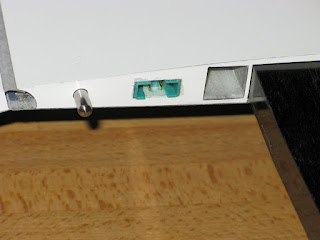Assembly continued with the wing servos and pushrods installation. The Ambrosia F3X comes with the brass ring-screws. You'll need 8 clevises (M2), some threaded rod and also aluminium tube with an internal diameter of 3 mm. First of all, I grinded 4 clevises (that will be on servos side) in order to use the servos arm hole the closest to the axis.
Then, the servos being in place in the wings, I cutted the threaded rod at the right length, glue with some rapid epoxy the clevis on the ailerons/flaps side. Once dry, I glued the clevis at the other end, and inserted a 3mm aluminium tube to make the control rod more robust and stiff. The reason I fix the clevises with rapid epoxy glue to to suppress any possible slope on the command. You will also notice that the ring screws are not glued in place. It will be done at the very end because once in place, the clevises cannot be removed anymore.
Then, I drilled the wing plug housing at the root of the wing. The housing is at the perfect dimension for the green MPX style plug.
The servos are screwed on their frame, and the command pushrod put in place. The ring screw is glued with epoxy at that time.
Same for the flaps. The only difference is the servo arm neutral position with is different in order to obtain more travel down for the airbrakes:
The servo covers are cut, following the moulding mark. They fit perfectly:
I prepared a small ON/OFF switch on an epoxy plate which is then screwed on the servo tray. The switch is small enough to let the space for the receiver.
The battery has been soldered. Cells are hot glued together. A transparent shrink tube allows a nice finish.
To complete the assembly, I just need to install the receiver and program the servo travels and neutrals, do the balance lead to obtain the right CG, then build some ballast. The ballast tube square section is 14x14 mm . I found a steel tube of this size and I will melt some lead in it.
Stay tuned !




















































